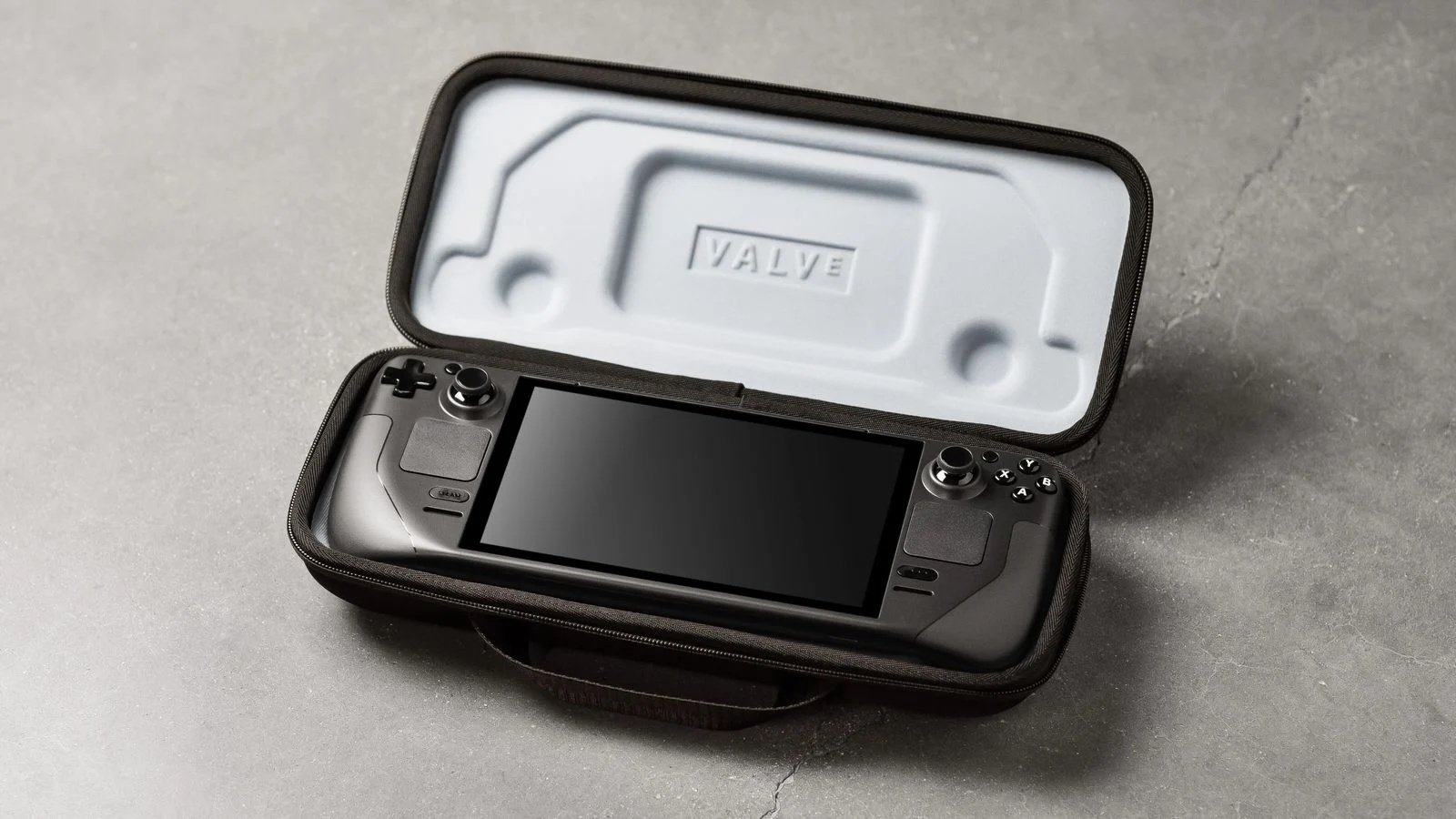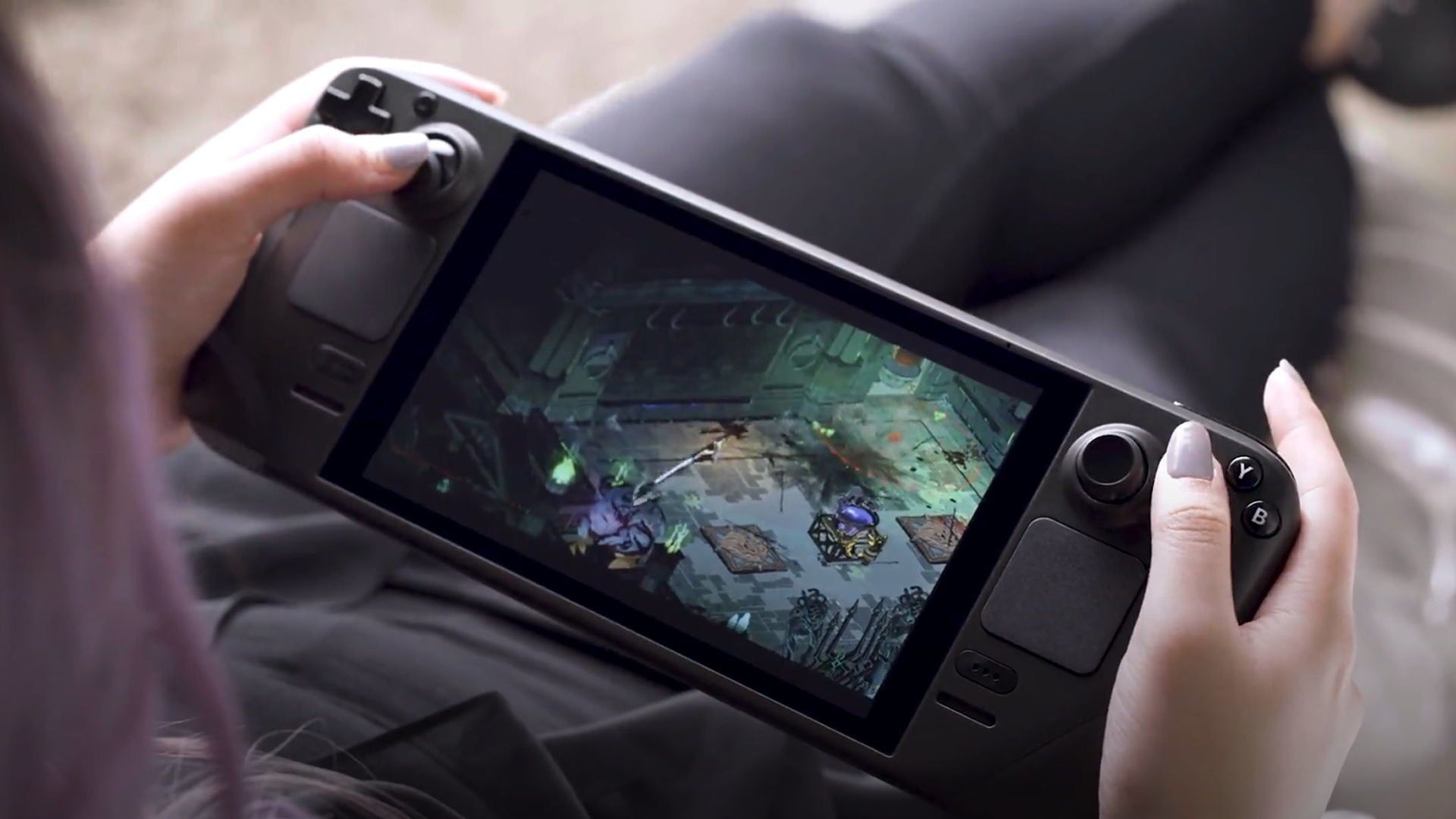Why AMD FSR could be the Steam Deck's secret weapon
AMD's upscaling tech could unlock tons of possibilities for Valve's handheld gaming PC.

Featuring more power than last generation consoles housed within a chassis that's comparable to the Nintendo Switch, Valve's upcoming Steam Deck handheld gaming PC is one of the most exciting devices that have been announced in years. Valve promises that it will be more than capable enough to play whatever game you throw at it, and the inclusion of gyroscopic aiming and dual Steam Controller-style trackpads means that playing first-person games on the device could almost be as smooth as a typical mouse and keyboard setup. Valve is also planning to release an official dock for the Steam Deck that allows you to hook it up to an external display, letting you use it like a desktop PC if you want to.
The machine sounds like it's going to be a godsend for people who want to take their Steam library on the go, but many are skeptical of Valve's claim that it has "more than enough performance" to run the latest AAA games. Whether the Steam Deck is as capable as Valve says it is remains to be seen, but we do know that Steam Deck users will have a secret weapon available that could give the handheld a serious boost: AMD FidelityFX Super Resolution. Here's a look at what AMD FidelityFX Super Resolution is, some of the ways it could significantly benefit the Steam Deck, and what some of the potential drawbacks and issues you could encounter with it are, too.
What is AMD FidelityFX Super Resolution?
AMD FidelityFX Super Resolution, or AMD FSR for short, is an algorithm-based upscaling technology that renders in-game frames at a lower-than-native resolution, than applies upscaling and sharpening techniques to try to make the frames look like they were rendered at the user's native resolution. This process is significantly less taxing on your hardware than native rendering is, and in most cases, the final image still looks great.
AMD FSR is very similar to NVIDIA's DLSS in this regard, as both technologies essentially do the same thing. NVIDIA's DLSS 2.0 is more potent than AMD FSR, but it's also only usable if you have an NVIDIA RTX graphics card. AMD FSR is less advanced overall, but it's still pretty effective, and it also works with a much wider variety of GPUs — including the custom RDNA 2 found in the Steam Deck.
Why AMD FSR on Steam Deck matters
AMD FSR on Steam Deck will be a big deal because it has the potential to substantially boost the device's performance. In situations where the Steam Deck might struggle to run a game at high settings without causing a notable drop in framerate, AMD FSR can counteract this by lowering and then upscaling the resolution at which the game is being rendered. This way, players will still be able to enjoy the visual detail added by high settings without having to worry about performance issues.
In docked mode, AMD FSR will also be useful, as it will help offset the inevitable performance drop that will occur when using an external monitor with a higher resolution than the Steam Deck's 7-inch, 1200x800 display. This will make the desktop experience considerably better, which will no doubt be valuable for people who plan to use the Steam Deck docked when playing at home.
Are there any potential drawbacks?
The only anticipated downside of AMD FSR on Steam Deck is that when you're playing in portable mode on the machine's 1200x800 display, the upscaling may not work very well. This is because the resolution AMD FSR will render the image in before upscaling it will be very low, making it more difficult for the upscaling and sharpening algorithms to work effectively. The PC gaming community has conducted tests of AMD FSR at 720p to get an idea of what the experience on Steam Deck might be like, and results are mixed. Some games look just fine rendered at lower resolutions and then upscaled to 720p, while others look quite blurry. It's worth noting, however, that artifacts and blurriness are naturally going to be more noticeable on a standard 27-inch display than they will be on the Steam Deck's 7-inch one.
All the latest news, reviews, and guides for Windows and Xbox diehards.
While it isn't technically a drawback, it's also important to remember that AMD FSR is only available in 12 games right now (Arkane Studios' latest, Deathloop, is one of them). Some upcoming titles like Far Cry 6 and Baldur's Gate 3 will support it when they launch, but overall, players will have to wait awhile before the technology is officially usable in a wide variety of games. Therefore, Steam Deck users shouldn't expect to be able to use AMD FSR in all of their favorite games when the system launches (you can use a community hack to force it to run in games that use the Vulkan API, though).
Final thoughts
Even though it will take a while for AMD FSR to be widely usable in an official capacity, the potential of the technology is nevertheless huge for Steam Deck users. With AMD FSR, you'll be able to make your games run much smoother without sacrificing much visual quality, which is a big deal for a portability-focused machine like the Steam Deck. We expect that even if issues with blurriness occur when upscaling from below the Steam Deck's native 1200x800 resolution, they won't be too noticeable on the device's 7-inch display. The technology will also likely be very helpful when using the Steam Deck with external 1080p monitors.
Are you excited for the potential of AMD FSR on the Steam Deck, or do you think that it won't be very useful? Let us know in the comments. The Steam Deck is expected to launch in December 2021, and is available in three configurations: a 64GB variant for $399, a 256GB variant for $529, and a 512GB variant for $649. If it's as good as Valve says it will be, it could end up being one of the best systems on which to play the best PC games.

Brendan Lowry is a Windows Central writer and Oakland University graduate with a burning passion for video games, of which he's been an avid fan since childhood. He's been writing for Team WC since the summer of 2017, and you'll find him doing news, editorials, reviews, and general coverage on everything gaming, Xbox, and Windows PC. His favorite game of all time is probably NieR: Automata, though Elden Ring, Fallout: New Vegas, and Team Fortress 2 are in the running, too. When he's not writing or gaming, there's a good chance he's either watching an interesting new movie or TV show or actually going outside for once. Follow him on X (Twitter).



